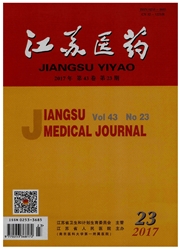

 中文摘要:
中文摘要:
目的研究成纤维细胞生长因子受体2(FGFR2)、基质金属蛋白酶-1(MMP-1)和趋化因子7(CCL7)在多发性骨髓瘤(MM)患者骨髓微环境中的表达及其临床意义。方法体外分离、培养MM患者(A组)和健康人群(B组)的骨髓间充质干细胞(BMSCs),镜下观察细胞形态,采用RT-PCR检测FGFR2、MMP-1和CCL7的基因表达水平。结果两组BMSCs均以梭形为主,细胞形态无明显差别。与B组相比,A组FGFR2和CCL7基因表达降低(O.0126±0.0293vs.0.0015±0.0013和0.1156±0.2616vs.0.0014±0.0022)(P〈0.05),而MMP_l基因表达增加(O.0480±0.0650vs.0.1216±0.2152)(P〈O.05)。结论FGFR2、MMP-1和CCL7在MM患者的BMSCs中表达异常,可能在MM的发生、发展过程中起重要作用。
 英文摘要:
英文摘要:
Objective To investigate the expressions and clinical significance of fibroblast growth factor receptor 2 (FGFR2), matrix metallopeptidase-1 (MMP-1) and chemokine (C-C motif) ligand 7 (CCL7) in the bone marrow microenvironment of patients with multiple myeloma(MM). Methods Bone marrow mesenchyrnal stem cells(BMSCs) were separated and cultured in vitro from the bone marrow of MM patients(group A) and healthy people(group B). The cell morphology was observed under microscope, and the mRNA expressions of FGFR2, MMP-1 and CCL7 were detected by RT-PCR. Results There was no significant difference in cell morphology between two groups, which was fusiform in shape mainly. Compared with group B, the mRNA expressions of FGFR2 and CCL7 were decreased(0. 0126±0. 0293 vs. 0. 0015±0. 0013 and 0. 1156±0. 2616 vs. 0. 0014±0. 0022) (P〈0. 05) ,while the expression of MMP-1 was increased(0. 0480±0. 0650 vs. 0. 1216 ±0. 2152) (P〈0. 05) in group A. Conclusion The expressions of FGFR2, MMP-1 and CCL7 are abnormal in BMSCs of MM patients, which may play an important role in the development and progression of MM.
 同期刊论文项目
同期刊论文项目
 同项目期刊论文
同项目期刊论文
 Actived NF-KB in bone marrow mesenchymal stem cells from systemic lupus erythematosus patients inhib
Actived NF-KB in bone marrow mesenchymal stem cells from systemic lupus erythematosus patients inhib In vitro migratory aberrancies of mesenchymal stem cells derived from multiple myeloma patients only
In vitro migratory aberrancies of mesenchymal stem cells derived from multiple myeloma patients only 期刊信息
期刊信息
